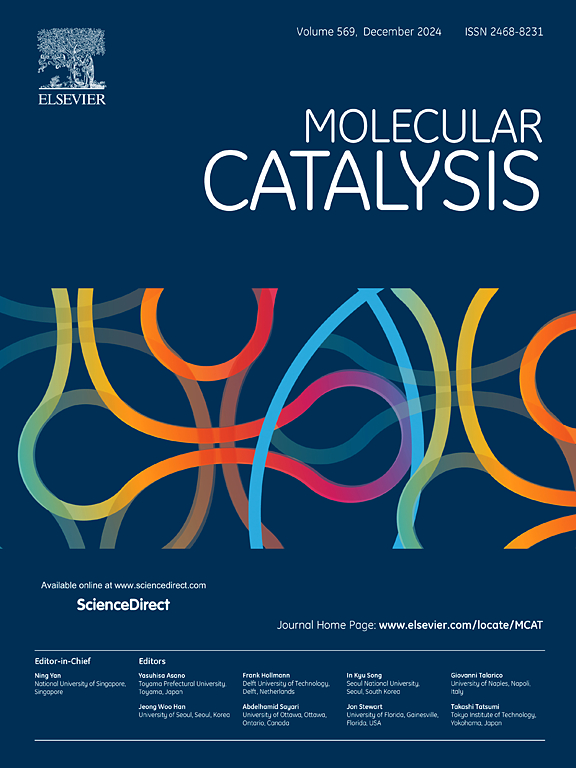Ce、Mg、Si和Ti对Ni/Al2O3催化剂对甲烷干重整的促进作用
IF 4.9
2区 化学
Q2 CHEMISTRY, PHYSICAL
引用次数: 0
摘要
甲烷的干重整(DRM)引起了越来越多的兴趣,因为它能够将温室气体,如CH₄和CO₂,转化成由H₂和CO组成的有用的合成气。在Al₂O₃上负载的Ni通常用于该反应;但由于烧结和积碳,其活性趋于下降。本研究评估了Ce、Mg、Si和Ti促进剂对Ni/Al2O3的影响,目的是提高其在DRM中的催化性能。用等摩尔量的促进剂合成了四种不同的催化剂,并通过x射线衍射、H₂-TPR和CO₂-TPD分析等多种表征技术研究了它们对Ni晶粒尺寸、还原性能和表面碱度的影响。Ni/Ce-Al在DRM中表现出最佳的性能,因为它具有较小的Ni晶粒尺寸、优异的还原性和优异的CO2活化能力。其他促进催化剂虽然影响了Ni的物理化学性质,但由于还原性较低,Ni粒度较大,降低了CO2活化能力,对DRM性能没有改善。该研究突出了Ni/Al2O3催化剂的促进作用,为开发耐用的DRM催化剂提供了途径。本文章由计算机程序翻译,如有差异,请以英文原文为准。

Promotional effect of Ce, Mg, Si, and Ti on Ni/Al2O3 catalysts for dry reforming of methane
Dry reforming of methane (DRM) has attracted increasing interest due to its ability to transform greenhouse gases, such as CH₄ and CO₂, into useful synthesis gas composed of H₂ and CO. Ni supported on Al₂O₃ is commonly applied in this reaction; however, its activity tends to decline due to sintering and carbon accumulation. This work evaluated how Ce, Mg, Si, and Ti promoters influence Ni/Al2O3, with the goal of improving its catalytic performance in DRM. Four different catalysts were synthesized using equal molar amounts of promoters, and their influence on Ni crystallite size, reduction properties, as well as surface basicity was investigated through various characterization techniques, such as X-ray diffraction, H₂-TPR, and CO₂-TPD analyses. Ni/Ce-Al exhibited the optimal performance in the DRM owing to its small Ni crystallite size, excellent reducibility, and superior CO2 activation capability. Although the other promoted catalysts affected the physicochemical properties of Ni, they did not improve the DRM performance due to their lower reducibility, larger Ni particle size, and diminished CO2 activation ability. This study highlights the promotional effects on Ni/Al2O3 catalysts and provides a pathway for the development of durable DRM catalysts.
求助全文
通过发布文献求助,成功后即可免费获取论文全文。
去求助
来源期刊

Molecular Catalysis
Chemical Engineering-Process Chemistry and Technology
CiteScore
6.90
自引率
10.90%
发文量
700
审稿时长
40 days
期刊介绍:
Molecular Catalysis publishes full papers that are original, rigorous, and scholarly contributions examining the molecular and atomic aspects of catalytic activation and reaction mechanisms. The fields covered are:
Heterogeneous catalysis including immobilized molecular catalysts
Homogeneous catalysis including organocatalysis, organometallic catalysis and biocatalysis
Photo- and electrochemistry
Theoretical aspects of catalysis analyzed by computational methods
 求助内容:
求助内容: 应助结果提醒方式:
应助结果提醒方式:


